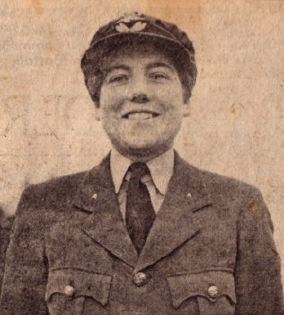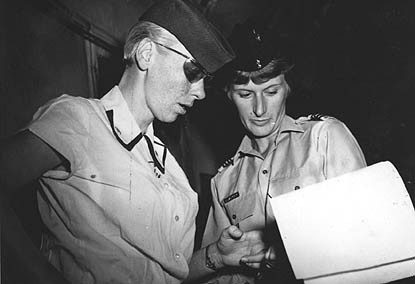|
"Melbourne - Queen City of the South" Melbourne Gay & Lesbian History series
PUBLIC PLACES & POLICE ENTRAPMENT IN THE
50's | |||||||||||||||||
|
listen:
| |||||||||||||||||
|
The 1950s and 60s could be a pretty tough time for camp people in Melbourne. Beginning in the mid- 1940s, Victoria's police joined in a nationwide effort to eliminate homosexuality from public places and the numbers of men convicted for 'unnatural acts' increased at a steady rate year after year.
Eventually, so determined were the Victorian police to 'get' the 'hundreds' of homosexuals that were known to live in Melbourne, they set up a special task force within the Vice Squad. Members of the task force were selected not merely for their toughness but also for their 'looks and styling'. They were clearly part of an entrapment squad. And sure enough conviction rates shot up to more than 100 per year.
But from time to time the courts found themselves faced with defendants who refused to meekly plead guilty - and here problems often arose. In 1952, for example, a man charged with buggery partly on the evidence that he owned women's clothes, successfully defended himself on the grounds that he needed them for his work - as a female impersonator!
A decade later, a case raised the tricky question of whether a public convenience was a public place arose. If it was a public place then men pissing there would have been guilty of an offence. It is of course illegal to piss in public. If it wasn't a public place then prosecuting offensive behaviour (often used against homosexual men) was harder to do - they were committing their acts in private places. In the end, the court decided that public toilets were public places but if a witness was required to make special efforts in order to be offended (in this case crouching on hands and knees to look under the cubicle door), this was 'abnormal and unusual' and going too far.
Although it was not as if you were
necessarily safe from the law in private places.
In November 1963 an anxious memo went out from ASIO headquarters in Melbourne to Air Forcc authorities. Their concern was with the discovery of a 'lesbian fraternity' in the WRAAF (the women's wing of the air force) associated in particular with a coffee lounge in Wellington St, St Kilda called EI Sombrero.
El Sombrero had been known to the authorities for some time as a 'well-known rendezvous for serving RAAF personnel, lesbians and generally for persons of ill-repute'. There had even been an official investigation into the place.
This anxiety related to a much wider concern about the extent of homosexuality among female members of the armed services - and especially among those who might have access to classified information. The fear, of course, was blackmail.
Because homosexuality among females
was not illegal, few lesbians came to the attention of the police
unless they were engaged in prostitution or in consorting with other
criminals [such as camp men perhaps in camp coffee shops?]. This did
not protect women from suspicion however as we see in the case of
El Sombrero. In some ways it made them even more threatening, because
they were harder to identify. Lesbianism, no less that male homosexuality
was - the authorities thought - a 'state of perversion displaying
a characteristic moral weakness' leaving those afflicted with the
'extreme potential' for 'compromise, exposure or pressure'. | |||||||||||||||||
| © text copyright Graham
Willett, Australian Lesbian & Gay Archives 2002 HOME | |||||||||||||||||
images: State Library of Victoria | |||||||||||||||||

